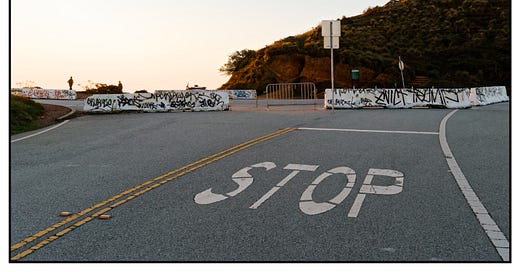In the summer of 1965, Bob Dylan walked onto the stage at the Newport Folk Festival, strapped on a Fender Stratocaster, and changed music history. The crowd—folk purists who had anointed Dylan as the voice of their movement—erupted, not in applause, but in outrage.
Pete Seeger allegedly tried to cut the power with an axe.
Dylan had done something radical: he had taken a vision and executed on it. He had made choice. And that choice was met with hostility because it didn’t seem like a choice that the Dylan people knew and loved would have made. This new Dylan was a complete unknown (pun intended for those who have seen the movie).
This moment, almost mythological in its retelling, highlights something fundamental: people hate when what they know changes, and yet artists must change in order to grow and realize the thing that drives them to create. But therein lies the rub.
Execution, by its very nature, creates opposition. The moment an artist turns an idea into a tangible piece of work—a photo, a novel, a painting, a song—they create the opportunity for rejection. More importantly, they force the world to make a decision: Do I like this? Do I hate this? Is this for me?
And most of the time, the answer will be “no.”
But Dylan didn’t go electric to be liked. He did it because he had to do it. Because he felt it. Because believed in it. Just as Picasso didn’t shift to Cubism to appease his audience, and James Joyce didn’t write Ulysses to make reading easier.
These artists understood that if they were to be authentic, they would have to endure rejection and sometimes even outright hostility because that’s just the cost of having a voice.
So what is it to you?
Well, if you’re an artist, hopefully it is a note of encouragement, which is often needed when you share yourself and all your messy evolutions and experiments as you develop your voice and work in this highly public, highly comment-driven world.
If your work is being criticized, you might be on the right path. Not because criticism is always valid, and not because it should be ignored. Try and parse the constructive elements from the noise and hear what might be true, but know that you are making something worth reacting to, and that is fertile ground.
The challenge for artists isn’t to have the vision—it’s having the courage to execute on that vision knowing full well that it will invite rejection. But that is exactly what separates those who change the world from those who simply observe it.
Everyone is going to hate you. Keep going.





As a corporate and interior photographer largely reacting to the market - constantly - I love this. I want to break out, have my work stand out, not be judged in the echo chamber where the majority of photographers churn out pretty much the same thing. But I get scared because of the economy. If I don’t shoot interiors how the market dictates, I will probably flounder. Maybe daring to flounder is the way to go up a level. Especially if you believe sufficiently in what you know you could be doing.
That was encouraging and a different perspective then I’d ever thought about. I have to fight the
urge to people please with my art. Thanks for that.